Custom-built Zuki Ute is warmer ATV alternative
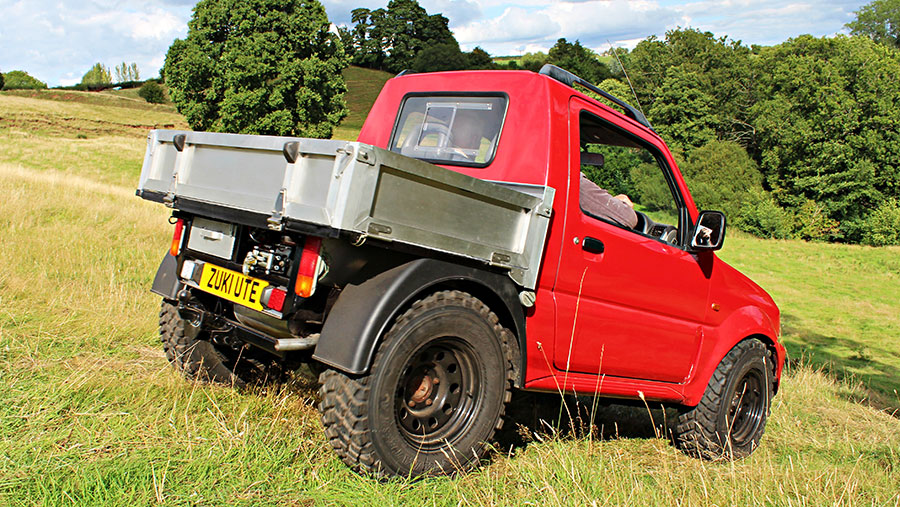 © James Andrews
© James Andrews Farm buggies are great in many ways, but their weighty price tags, basic rattly cabins and potentially high maintenance costs mean they’re not everyone’s cup of tea.
Sifting through Farmers Weekly’s buyers guide shows the list price for a middle-of-the-road Polaris Ranger is more than £12,000, with John Deere’s top-of-the-range Gator commanding about £15,000.
If you’d rather not spend the winter nursing a fistful of chilblains, a fully enclosed cab adds more than £2,500 to that figure. And throwing a heater into the mix requires even deeper digging into the coffers.
See also: On test: Quadzilla offers budget alternative
So, when Worcestershire farmer Maurice Powell decided to replace his ATV with something a little more comfortable he asked his friend, 4×4 specialist Phil Foster, to build him something bespoke.
Having spent years competing in off-road events with his heavily modified V8 Land Rover Defender, and sometimes struggling to beat much lighter and more nimble Suzuki Jimnys, Mr Foster decided the compact Japanese 4×4 would be the ideal starting point for the project.

© James Andrews
It’s reputation for solid mechanicals and cheap replacement parts also fitted the bill perfectly.
With that in mind he and Mr Powell started shopping around for a donor vehicle and picked up a tidy year 2000 Jimny with 77,000 miles on the clock for £1,100.
Although the Jimny only comes with the option of a 1.3-litre petrol engine – ruling out the opportunity of running the buggy on red diesel – they reckoned the running costs would be pretty low.
Also, the fact it would still perform like a car after the mods meant running to the petrol station wouldn’t be a problem.
Cutting and shutting
Once in the workshop, the first task was to remove the rear seats and slice off the back portion of the cabin, just behind the front seats.
Unlike most other compact 4x4s the Jimny sits on a full ladder chassis, meaning the bodywork has little to do with the structural integrity of the vehicle. As a result, this sort of drastic modification is fair game.
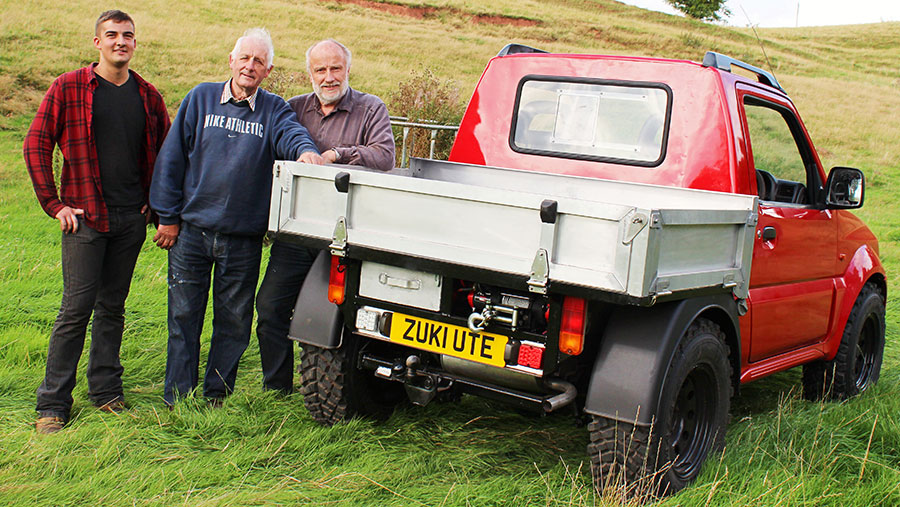
Dan Gregory, Maurice Powell and Phil Foster © James Andrews
Next, a 30mm tubular roll frame was fabricated and welded into the exposed open section of the body before being securely mounted to the chassis.
The rear of the cabin was then closed off with 1.2mm steel plate, which was seam welded to the frame.
No fibreglass was used as they wanted the rear of the cabin to act as a bulkhead, protecting the driver from the load in the rear deck.
Mr Foster also added a Lexan sliding rear window – similar to those used in rally cars – that’s apparently almost impossible to break.
On the inside, closed-cell foam sheet was used for insulation and sound deadening, and a small recess was created behind the seats for storing sheep drench and medicines.
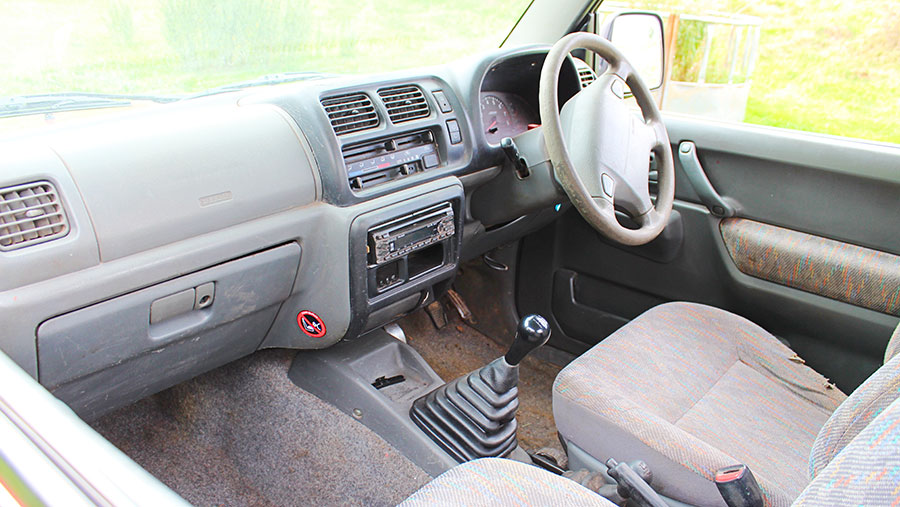
© James Andrews
The rest of the interior was left as standard, meaning there are fans, a heater, a radio/CD player, electric windows and central locking. Although this model doesn’t have it, some Jimnys come with air-con too.
Bed time
With the rear chassis rails exposed, the job of constructing the load bed could begin.
Here, engineer Dan Gregory started by welding up a mild steel frame to support the 17cu ft (0.48cu m) body.
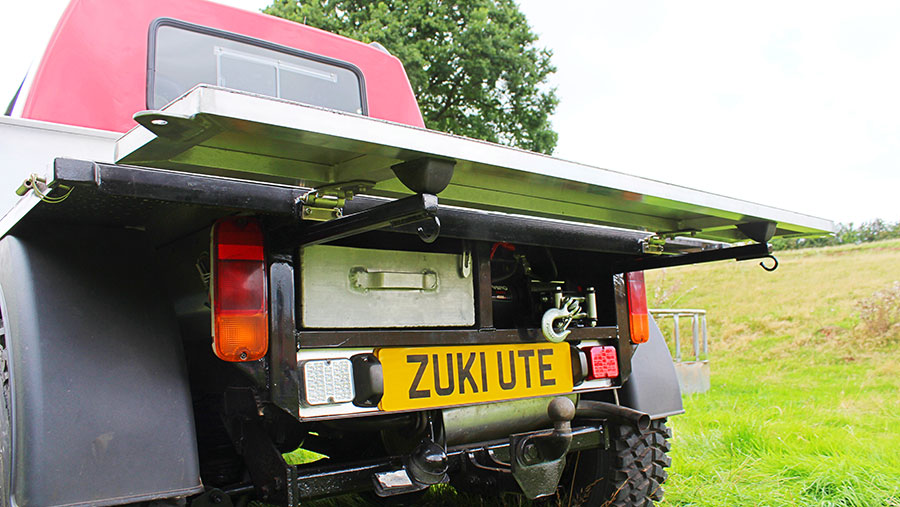
© James Andrews
At the rear this included recesses for a slide-out toolbox and 4,500lb Rhino winch, with radio remote control. He also added an Anderson 12V power socket and fabricated mounting points for the rear light clusters.
The deck itself was given a smooth 3mm aluminium base with no lip at the tailgate end so feed bags can be slid out easily.
The rest of the body – including the drop-down sides and tailgate – were made out of aluminium alloy and TIG-welded together.
Another nice touch was the addition of sliding steel supports allowing the tailgate to be used as a bench, or an additional flat-load area.
In the running gear department, the suspension was given a 1in lift on all four corners, which – together with a few other minor tweaks – made space for a wider set of 15x8in steel rims shod with competition-spec Malatesta Kobra tyres.
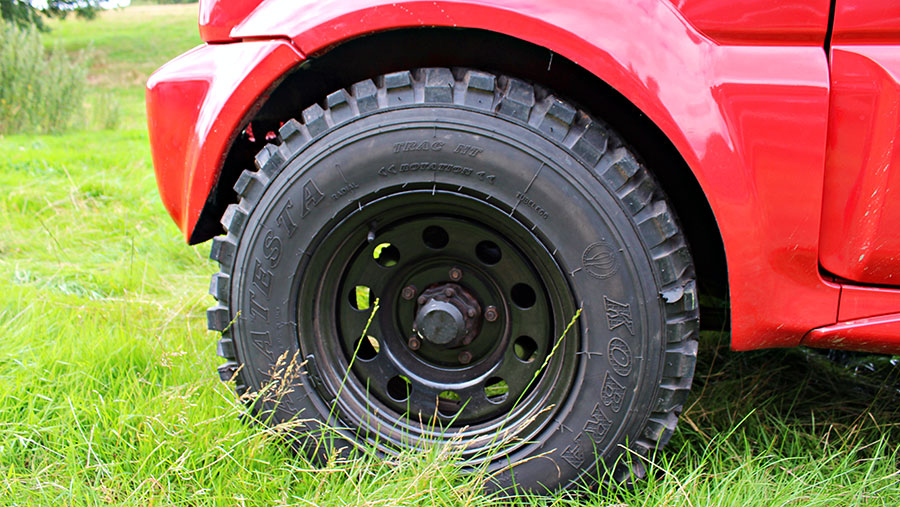
© James Andrews
For optimum, all-round performance, the front 235/75 R15 rubbers run at 15psi and the wider 255/70 R15s run at a slightly lower 12psi to account for the increased tyre section.
The rear wheels also sit in Mercedes Sprinter mudguards to prevent mud caking the underside of the chassis and framework.
The larger-diameter treads do mean the buggy is slightly higher geared than the standard model. However, an aftermarket, lower-geared transfer box could be added to bring this back down again.
It would be possible to give the suspension a higher lift and modify the arches to accommodate flotation tyres, but because the buggy needed to perform well on the road too, they decided not to go any bigger.
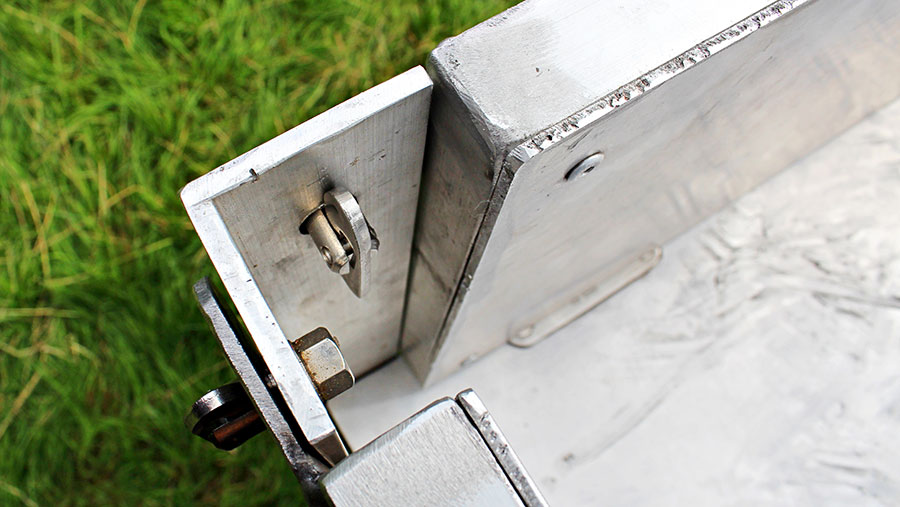
© James Andrews
As standard five-speed transmission drives through a hi-lo transfer box and although there’s no diff-lock, there’s no central differential to worry about either.
Watching the weight
All up, the modified buggy – which they are calling the Zuki Ute – weighs in at 970kg, giving it a similar bulk to the largest diesel buggies from the likes of John Deere, Polaris and Kubota.
It’s also completely road legal and remains registered as a Suzuki Jimny. However, the logbook has been updated to confirm it’s been converted to a two-seater.
Insurance was organised though local broker, Caleb Roberts, which agreed a book value of £10,000 and included it on Mr Powell’s farm policy.
Off the back of the success of this first modification, Mr Foster and Mr Gregory are working on a second Zuki Ute, which will become their demonstrator model.
This is based on an automatic Jimny with 137,000 miles on the clock. “These little vehicles are so mechanically reliable that I thought I’d convert a higher-mileage example to show people how good they still are after that much work,” says Mr Foster.
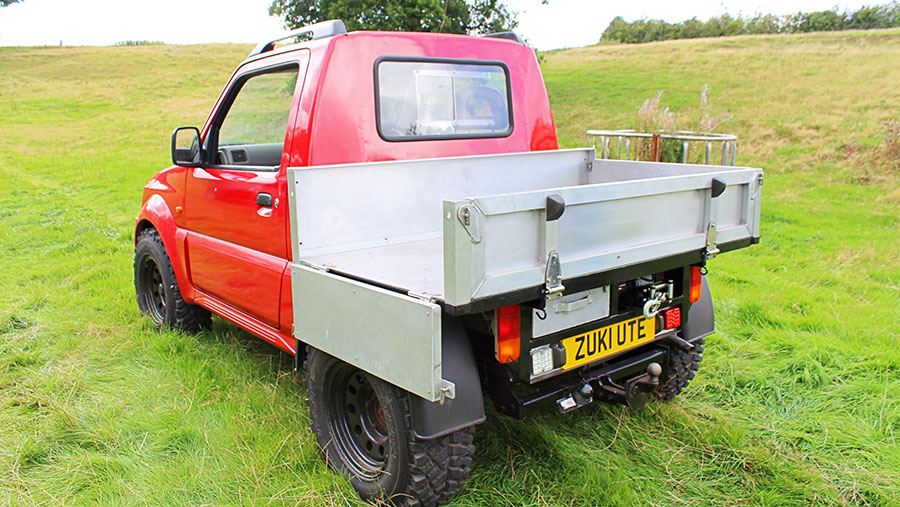
© James Andrews
He’s also got two later-model Jimnys in the workshop, waiting for the “chop” and plans to start selling them to other farmers.
Prices for the basic conversion start from less than £7,000 and a quick thumb through the classifieds shows there are plenty of second-hand Jimnys available for less than £2,000.
However, corrosion can be a big problem so buyers need to know what they’re looking for. For that reason, Mr Foster would prefer to source the donor vehicle himself.
Another recent development is a quick-hitch system for mounting equipment such as sprayers and spinners without the need for tools. He’s also working with local engineer Milton F Hunter to develop a six-wheel-drive version with a larger load bed.
Zuki Ute specs
- Base vehicle 2000 Suzuki Jimny on 77,000 miles
- Engine 1.3-litre, four-cylinder petrol
- Transmission Five-speed manual
- Tyres Malatesta Kobra – 235/75 R15 front and 255/70 R15 rear
- Rear load bed volume 17cu ft (0.48 cu m)
- Weight 970kg
- Towing capacity 350kg (unbraked) 1,300kg (braked)
- Extras 4,500lb Rhino winch, toolbox, wheel and tyre package
- Price Decent second-hand Jimnys can be picked for £2,500 or less and the conversion costs about £7,000

